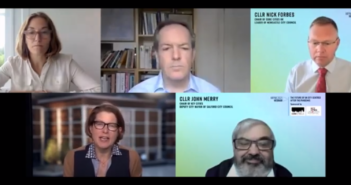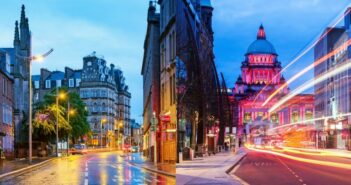2012 has been the year when the New York Highline had it first full year of operation in the current form and became one of the world’s favourite urban walkways. June 2011 marked the end of the second phase of construction of the High Line public park. The complete transformation of New York’s historic freight rail line into a city park is now two thirds of the way through, offering the city’s residents access to a wealth of new green space.
High Line’s history
The High Line is a public park built on an historic freight rail line elevated above the streets on Manhattan’s West Side. It runs from Gansevoort Street in the Meatpacking District to West 34th Street, between 10th & 11th Avenues. While the land beneath the High Line is owned in parcels by New York State, New York City, and more than 20 private property owners, it is maintained and operated by Friends of the High Line.
Friends of the High Line, founded in 1999 by community residents, were the driving force behind the preservation and transformation that has taken place in park. On a day to day basis, the organisation is responsible for overseeing maintenance, operations, and public programming for the park, as well as raising the essential private funds required to support more than 90% of the park’s annual operating budget.
The first section of the High Line opened on June 9, 2009, the second section, which runs between West 20th and West 30th Streets, opened on June 8, 2011, and the construction of the third and final phase began in September 2012.
The 2011 completion of phase two
The second phase of the High Line project saw the city park double in length and quadruple in total area. As a result, the High Line now runs from Gansevoort Street in the south to 30th Street in the north.
The High Line, as a physical space, offers New Yorkers access to some very modern and beautiful green space in the midst of a busy city. It has been planted with 210 species of trees, shrubs and grasses, selected for their native relevance and hardiness.
The benefit to the quality of life of New Yorkers has been palpable.
The High Line development has furthermore proved a shrewd investment on the part of the City. The City has invested a total of just $115 million (£70m) in converting the historic freight rail line into an elegant walkway, but as a result the city authorities have attracted an estimated $2 billion in private money to the neighbourhood.
The development has attracted hotels, residential property developers and high-end fashion retailers, transforming the area. Buildings designed by internationally-renowned designers such as Frank Gehry, Jean Nouvel and Neil Denari have become common place. It is further anticipated that, over the long term, development and prosperity will continue to spread to the north.
The future
Work is already underway on the third and final section of the High Line project. Currently overgrown with plants, the $90 million project will transform the unused elevated rail tracks that run around a train yard from West 30th to West 34th streets from 10th to 12th Avenues.
Funded through a mix of public and private donations, construction will be divided into three phases, with the first due to be completed in 2014. A new walkway, more plants and vegetation, a beam-and-girder playground, and a train car café will mark the final stage of the transformation of these historic freight rail lines into an internationally revered example of regeneration and sustainable development.
Image credit : Photobank gallery



